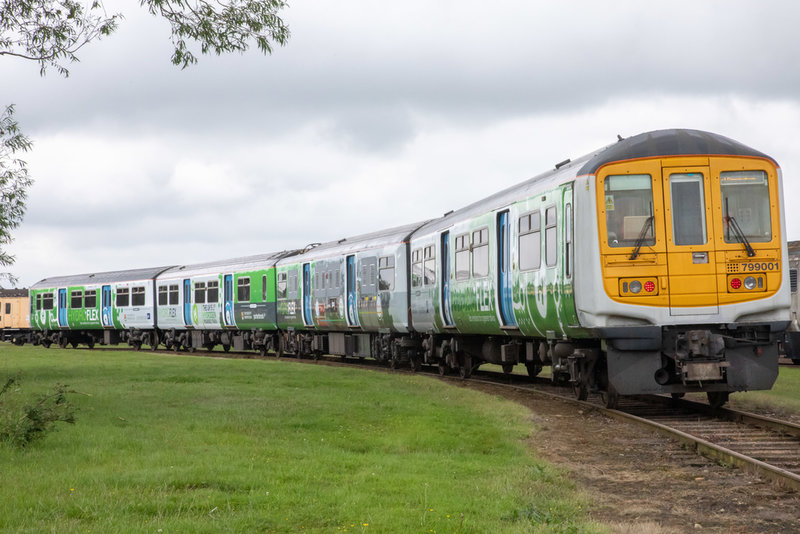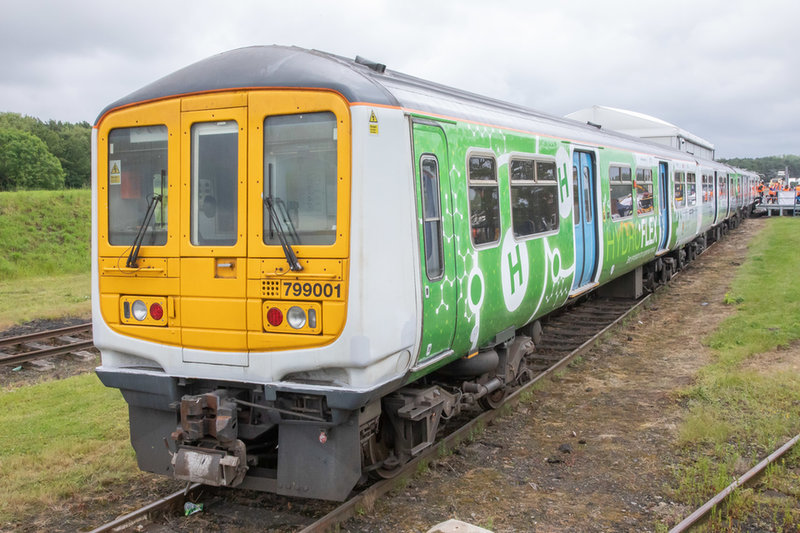Andrew Tunnicliffe (AT): Can you tell us a little about the HydroFLEX project?
Dr Stuart Hillmansen (SH): We've been investigating hydrogen-powered rail vehicles for a number of years. Studies have been mostly paper-based, with a bit of experimentation on narrow gauge locomotives.
We first developed the Hydrogen Pioneer, which then became Hydrogen Hero, as a demonstrator to introduce the rail industry to hydrogen technology. In recent years we've developed a partnership with Porterbrook, who agreed to provide a Class 319 donor vehicle, onto which we fitted hydrogen and propulsion equipment to make the HydroFLEX train.
The aim was to prove, at a concept level, that we could deliver a hydrogen-powered train, something we did within nine months. We installed the equipment – the hydrogen fuel cell, fuel tanks and the battery system – in the motor car of a Class 319.
So that we could mount the equipment on the floors, we removed all the seats, put the equipment in, mounted the new propulsion equipment on the floor and routed the power through power cables down to the traction system.
We could then show people around the motor car and invite them into the carriage to see what the fuel cell, the battery system and the hydrogen storage systems looked like. This was very powerful as the Secretary of State for Transport, the Shadow Secretary of State for Transport, Select Committee and a whole host of senior rail industry figures got to see, first-hand and up close, hydrogen technology in action.

Japanese company Odakyu Electric Railway is trailing Nokia’s AI-based SpaceTime scene analytics for railway crossing safety. Image: Credit: Cassiopeia_sweet
How has the system evolved along the way?
We have increased the system’s level of automation and the fuel cell and battery now run autonomously. There are minimal changes to the driver’s desk, meaning they wouldn’t really notice they're driving a fuel cell train. We've learned a huge amount about how to integrate a modern fuel cell into quite an old traction system. That did throw up a lot of problems, which our engineering team have been able to overcome.
I think it’s been a really good learning experience and we're now in a good place to understand how to retrospectively convert rail vehicles into fuel cell vehicles, and make use of rolling stock that otherwise might just be sitting idle in long-term storage.
What do you think the success of this project says about the potential of hydrogen to pave our way to a cleaner future?
The key thing is a hydrogen train moves and behaves like a train powered by an electrification system. Like electric trains, they are clean transport, there are no local emissions, they are quieter and people are generally happier travelling in electric vehicles. That's one of the major successes of this project - achieving an electric train-like performance without having overhead wires.
You have secured further funding for the project - what will this mean?
We’ll be able to develop a system whereby we take the equipment that we've got inside the vehicle and package it up underneath, through a raft-type system. We aim to do this in the next nine months.
We will also develop a production design that's ready for people to place orders for this raft system, with all the equipment in it, to retrospectively fit it to a number of different types of vehicles. We are packaging up the fuel cell and hydrogen storage underneath the train.

Japanese company Odakyu Electric Railway is trailing Nokia’s AI-based SpaceTime scene analytics for railway crossing safety. Image: Credit: Cassiopeia_sweet
What might hydrogen-powered rail mean for the UK’s rail infrastructure?
It's not easy to make the train but we’re there. But we also have to have fuel infrastructure too, this is vital. Therefore, we have developed a refuelling system and now have the expertise to understand what's required in terms of refuelling these vehicles, in a period comparable to diesel refuelling.
Eventually, we will need to replace some of the diesel fuelling equipment with hydrogen equipment. This will be a long-term project and will take us to 2040. But we need to make a start right now.
It could be that hydrogen facilities are producing hydrogen on site, which can then be used to fuel other systems like local buses, potentially taxi systems, fleet vehicles or even private vehicles all in one place near a city centre. There's a lot of work to do.
What will this mean for the future of travel and the UK’s green commitments and how does it compare with other technologies?
I think the key thing is that you can produce hydrogen from electricity and water. We will always have an electricity supply, [and] as the grid moves towards zero carbon that means we’ll be able to produce hydrogen without any fossil fuel involvement at all.
Hydrogen is complimentary to a battery, so effectively a hydrogen train is a battery-hydrogen train whereby the battery provides traction power and absorbs regeneration. Then the hydrogen fuel cell effectively keeps the battery charged as the vehicle moves, meaning we can get a much bigger range on the train as opposed to if it was battery only.
Some hydrogen rail vehicles are looking at achieving a range of 600km, but one of the things we're working on is still using alternating current electrification on the train. So the train can move on electrified railways. Then, at the end of the route, or at parts where there isn’t electrification, we move over to hydrogen power.
How does the UK compare with those of other developed countries in this field?
Germany is ahead of us, that's fair to say. They've got vehicles running and orders in. America is actually ahead of us too. We've worked with California and they've placed orders for fuel cell trains in the San Bernardino area.
So, we need that extra push to get us going and catch up. But we can be a leader in terms of the global export market for providing fuel cell propulsion systems to other parts of the world because it's not just us that has a problem with diesel vehicles.
